Publications
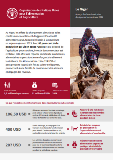
Niger: Humanitarian Needs Overview and Response Plan 2024
02/2024
In 2023, access to food emerged as the most pressing need for people in the Niger, where the impact of climate change and armed conflict continue to drive acute food insecurity.

Monitoring food security in Palestine and the Sudan: A joint FAO/WFP update for the members of the United Nations Security Council, February 2024. Issue No. 13 (Special edition)
02/2024
This is the thirteenth update of the Monitoring food security in food crisis countries and territories with conflict situations, jointly produced by the Food and Agriculture Organization of the United Nations (FAO) and the World Food Programme (WFP) to inform members of the United Nations Security Council (UNSC) on critical food crises driven by conflict and insecurity.
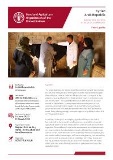
Syrian Arab Republic: Project profile
02/2024
The Food and Agriculture Organization of the United Nations is implementing a multiyear resilience project in six governorates in the Syrian Arab Republic with high levels of food insecurity.
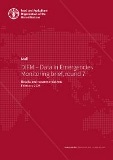
Mali: DIEM – Data in Emergencies Monitoring brief, round 7
02/2024
This Data in Emergencies Monitoring (DIEM-Monitoring) brief shares the results of a seventh-round assessment conducted in December 2023 and January 2024 in Mali.

Emergency Management Centre: Achievements overview, November 2022–October 2023
02/2024
The Food and Agriculture Organization of the United Nations (FAO) Emergency Management Centre is a global centre that supports the management of One Health emergencies such as animal health and plant health.
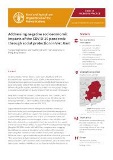
Viet Nam: Addressing negative socioeconomic impacts of the COVID-19 pandemic through social protection
02/2024
In late April 2021, Viet Nam faced its fourth wave of COVID-19, with over 895 000 new cases reported (FAO, 2022).
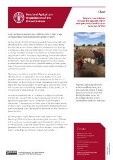
Chad: Belgium's contribution through the Special Fund for Emergency and Rehabilitation Activities (SFERA)
02/2024
In Chad, about 2.9 million people are projected to experience high levels of acute food insecurity (Cadre Harmonisé Phase 3 and above) during the 2024 lean season and over 1.74 million children under 5 years of age will likely be acutely malnourished (October 2023–April 2024).
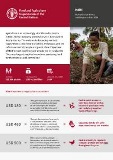
Haiti: Humanitarian Needs and Response Plan 2024
02/2024
Agriculture is an increasingly vital lifeline for people in Haiti. Rising insecurity and low harvests have pushed food prices up.
.tmb-th600x450.jpg?Culture=en&sfvrsn=a26d6f4a_1)
Lebanon: DIEM – Data in Emergencies Monitoring brief, round 6
02/2024
This Data in Emergencies Monitoring (DIEM-Monitoring) brief shares the results of a sixth-round assessment conducted in October and November 2023 in Lebanon.
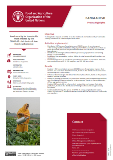
Bangladesh: Project Highlights – OSRO/BGD/008/WFP
02/2024
The World Food Programme contributed USD 1.5 million to mitigate the impacts of COVID-19 on the livelihoods and food security of 4 250 farming households (20 000 people) in urban and peri-urban areas of Dhaka, Bangladesh.
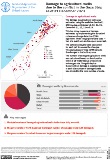
Damage to agricultural wells due to the conflict in the Gaza Strip as of 31 December 2023
01/2024
The damage to agricultural wells was estimated using the available Sentinel 1 SAR images on October 12, 13, 24, 25, December 11, 12, 22 and 23.
.tmb-th600x450.jpg?Culture=en&sfvrsn=90252e11_1)
Damage to cropland due to the conflict in the Gaza Strip as of 31st December 2023
01/2024
Sentinel 2 data from November 2022 and September 2023 was used as a baseline for comparison with December 2023 for NDVI-based change assessment.
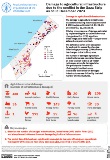
Damage to agricultural infrastructure due to the conflict in the Gaza Strip as of 31 December 2023
01/2024
The damage to agricultural infrastructure was estimated using the available Sentinel 1 SAR images on October 12, 13, 24, 25, December 11, 12, 22 and 23.
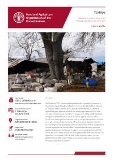
Türkiye: Rebuilding rural communities through cooperative movement - Project profile
01/2024
On 6 February 2023, two devastating earthquakes followed by tremors and aftershocks ripped through the southeastern region of Türkiye.
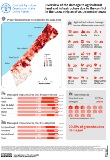
Overview of the damage to agricultural land and infrastructure due to the conflict in the Gaza Strip as of 31 December 2023
01/2024
The ongoing conflict between Hamas and Israel erupted on October 7, 2023, leading to Israeli strikes on the Gaza Strip.
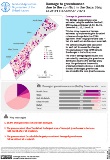
Damage to greenhouses due to the conflict in the Gaza Strip as of 31 December 2023
01/2024
The damage to greenhouses was estimated using the available Sentinel 1 SAR images on October 12, 13, 24, 25, December 11, 12, 22 and 23.
.tmb-th600x450.jpg?Culture=en&sfvrsn=34f4da30_1)
Damage to agricultural wells due to the conflict in the Gaza Strip as of 1 December 2023
01/2024
The damage to agricultural wells was estimated using the available Sentinel 1 SAR images on October 12, 13, 24, 25, November 5, 6, 17, 18, 29 and 30.

Damage to agricultural infrastructure due to the conflict in the Gaza Strip as of 1 December 2023
01/2024
The damage to agricultural infrastructure was estimated using the available Sentinel 1 SAR images on October 12, 13, 24, 25, November 5, 6, 17, 18, 29 and 30.

Social protection as a pathway to sustaining peace
01/2024
Global crises are becoming the new normal. From climate change to the contemporary food price crisis, vulnerable populations – and especially rural people – are facing increasingly difficult odds of flourishing.
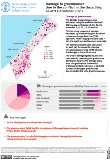
Damage to greenhouses due to the conflict in the Gaza Strip as of 1 December 2023
01/2024
The damage to greenhouses was estimated using the available Sentinel 1 SAR images on October 12, 13, 24, 25, November 5, 6, 17, 18, 29 and 30.
